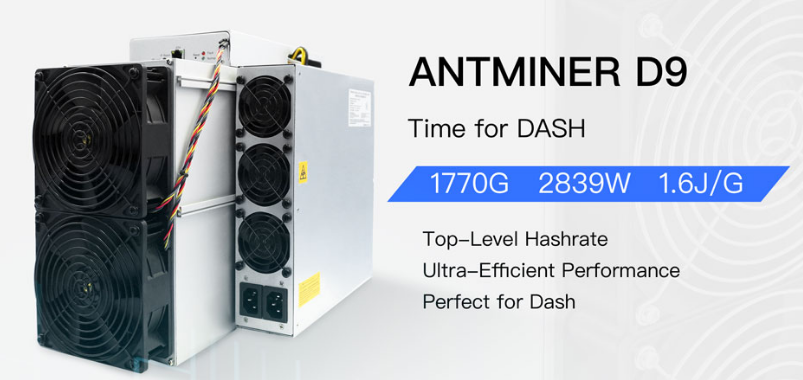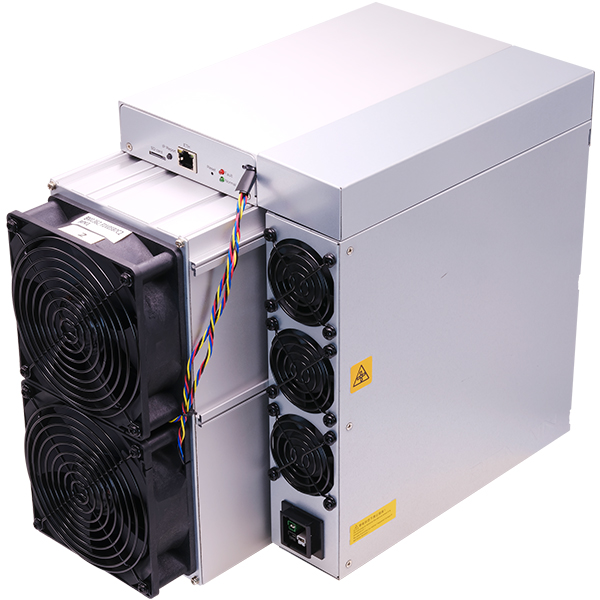Dash Miner D9 Repair Tutorial for Advanced Users
Cryptocurrency mining is a complex and demanding endeavor, requiring not only the right equipment but also the knowledge to maintain and repair it when issues arise. The Dash Miner D9, a powerhouse in the X11 algorithm mining space, is no exception. While it’s built for reliability and efficiency, even the most advanced hardware can encounter problems over time.
This article is designed for advanced users who are familiar with mining operations and want to dive deeper into troubleshooting and repairing their Dash Miner D9. Whether you’re dealing with hash rate drops, overheating, or power supply issues, this guide will walk you through the steps to diagnose and fix common problems, ensuring your miner runs at peak performance.

Understanding the Dash Miner D9
Before diving into repairs, it’s essential to understand the core components of the Dash Miner D9 and how they function together:

- Hash Boards: The D9 features three hash boards, each equipped with 126 high-performance hash chips. These boards are responsible for the miner’s impressive 1770 GH/s hashrate.
- Power Supply Unit (PSU): Designed to handle voltages between 200V and 240V, the PSU ensures stable power delivery to the miner.
- Cooling System: Dual fans provide efficient heat dissipation, maintaining optimal operating temperatures and preventing thermal throttling.
- Control Board: Acts as the brain of the miner, managing communication between components and allowing users to monitor and configure settings via the user interface.
Understanding these components will help you identify where issues might originate and how to address them effectively.
Common Issues and Diagnostic Steps
1. Hash Rate Drop or Inconsistent Performance
A sudden drop in hash rate is one of the most common issues miners face. Here’s how to troubleshoot:
- Check Power Supply: Ensure the PSU is delivering stable voltage and current. Use a multimeter to verify the output matches the miner’s requirements (200-240V AC).
- Inspect Hash Boards: Open the miner and visually inspect the hash boards for physical damage, burnt components, or loose connections. Use compressed air to remove dust buildup, which can impair performance.
- Review Temperature: Overheating can cause thermal throttling. Verify that the cooling fans are functioning correctly and that airflow isn’t obstructed.
- Update Firmware: Outdated firmware can lead to inefficiencies. Visit the Antminer website to download and install the latest version.
2. Overheating or Fan Failure
The Dash Miner D9 relies on its dual-fan cooling system to maintain optimal temperatures. If the miner overheats or the fans fail:
- Test Fan Functionality: Boot the miner and observe the fans. If one or both aren’t spinning, check the connections and replace the faulty fan if necessary.
- Clean the Miner: Dust accumulation can block airflow. Use compressed air to clean the internal components and fans.
- Monitor Ambient Temperature: Ensure the miner is placed in a well-ventilated area with an ambient temperature between 0°C and 40°C.
3. Power Supply Issues
A malfunctioning PSU can prevent the miner from operating or cause intermittent shutdowns:
- Verify Voltage Input: Use a multimeter to confirm the input voltage matches the miner’s requirements (200-240V AC).
- Check Connections: Inspect the power cables and connectors for damage or loose fittings.
- Test with a Spare PSU: If possible, connect the miner to a known-working PSU to isolate the issue.
4. Control Board Problems
The control board manages communication between components and the user interface. If the miner fails to boot or the UI is unresponsive:

- Reset the Control Board: Power off the miner, disconnect it from the power source, and wait 10 minutes before restarting.
- Check Ethernet Connection: Ensure the Ethernet cable is securely connected and functioning. Test with a different cable if necessary.
- Replace the Control Board: If the issue persists, the control board may need replacement. Contact Antminer support or purchase a compatible replacement part.
Step-by-Step Repair Guide
Tools You’ll Need:
- Screwdrivers (Phillips and flathead)
- Multimeter
- Compressed air
- Replacement parts (fans, hash boards, PSU, etc.)
- Thermal paste (if reseating chips)
Step 1: Safety First
- Always disconnect the miner from the power source before opening it.
- Use an anti-static wrist strap to prevent electrostatic discharge, which can damage sensitive components.
Step 2: Diagnose the Issue
- Use the diagnostic steps outlined above to identify the root cause of the problem.
Step 3: Replace Faulty Components
- Fans: Unscrew the faulty fan, disconnect it, and replace it with a new one. Ensure the replacement matches the original specifications.
- Hash Boards: Remove the damaged hash board by unscrewing it from the chassis and disconnecting its cables. Install the new board and secure it tightly.
- PSU: Replace the power supply unit by disconnecting all cables and removing it from the miner. Install the new PSU and reconnect the cables.
Step 4: Test and Reassemble
- After replacing the faulty component, reassemble the miner and reconnect it to the power source.
- Boot the miner and monitor its performance using the user interface.
- Check for error messages, verify the hash rate, and ensure temperatures remain within the optimal range.
Preventive Maintenance Tips
To minimize the need for repairs and extend the lifespan of your Dash Miner D9:

- Regular Cleaning: Clean the miner every 2-3 months to prevent dust buildup.
- Monitor Performance: Use the miner’s UI to track hash rate, temperature, and fan speed.
- Update Firmware: Install updates as soon as they become available to benefit from performance improvements and bug fixes.
- Optimize Environment: Place the miner in a cool, well-ventilated area with stable power supply.
Conclusion
The Dash Miner D9 is a robust and efficient mining solution, but like any hardware, it requires proper maintenance and occasional repairs. By understanding its components and following this tutorial, advanced users can diagnose and fix common issues, ensuring their miner operates at peak efficiency.
Remember, preventive maintenance is key to avoiding costly downtime. With the right care and attention, your Dash Miner D9 will continue to deliver exceptional performance, helping you stay ahead in the competitive world of cryptocurrency mining.